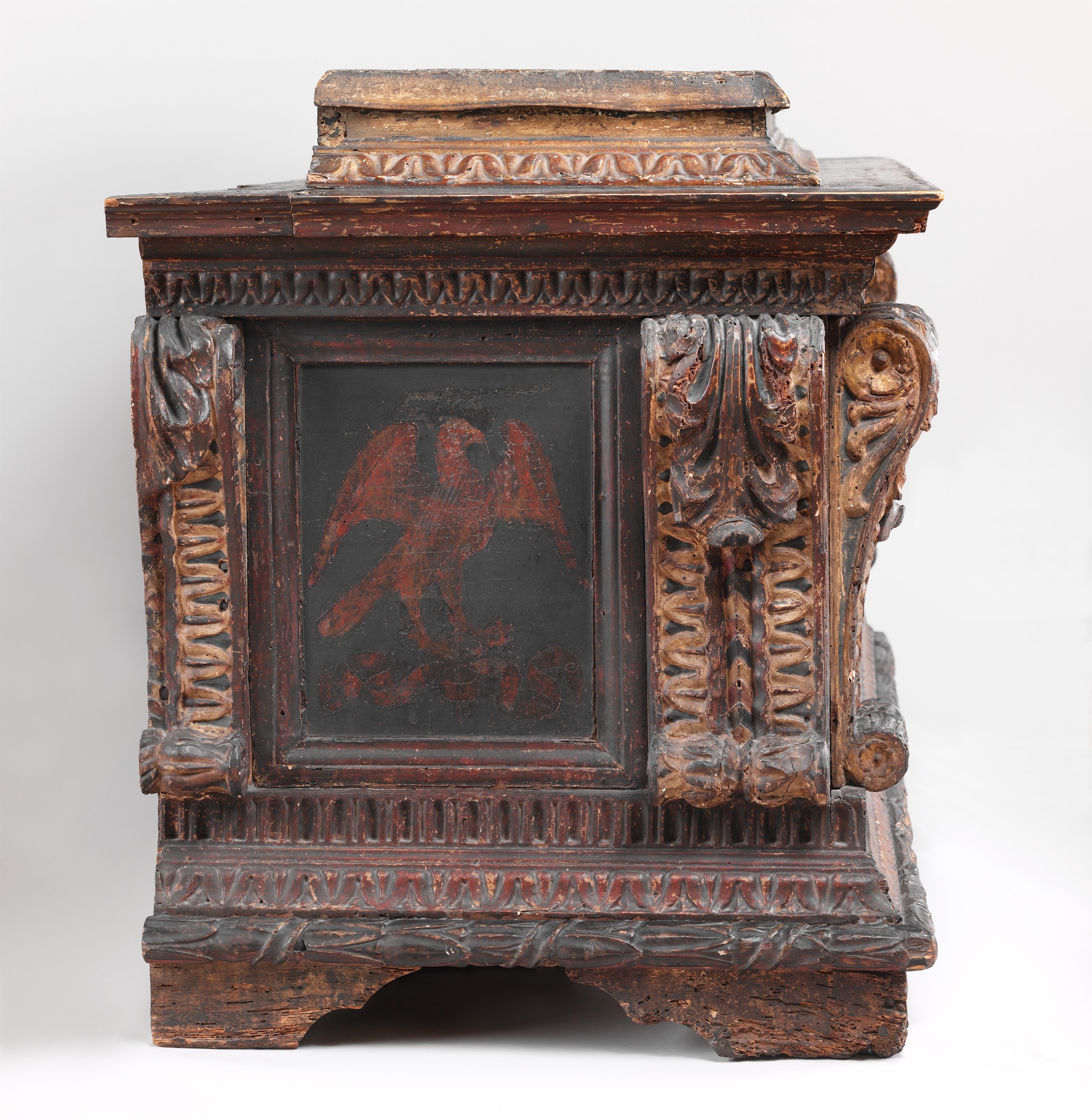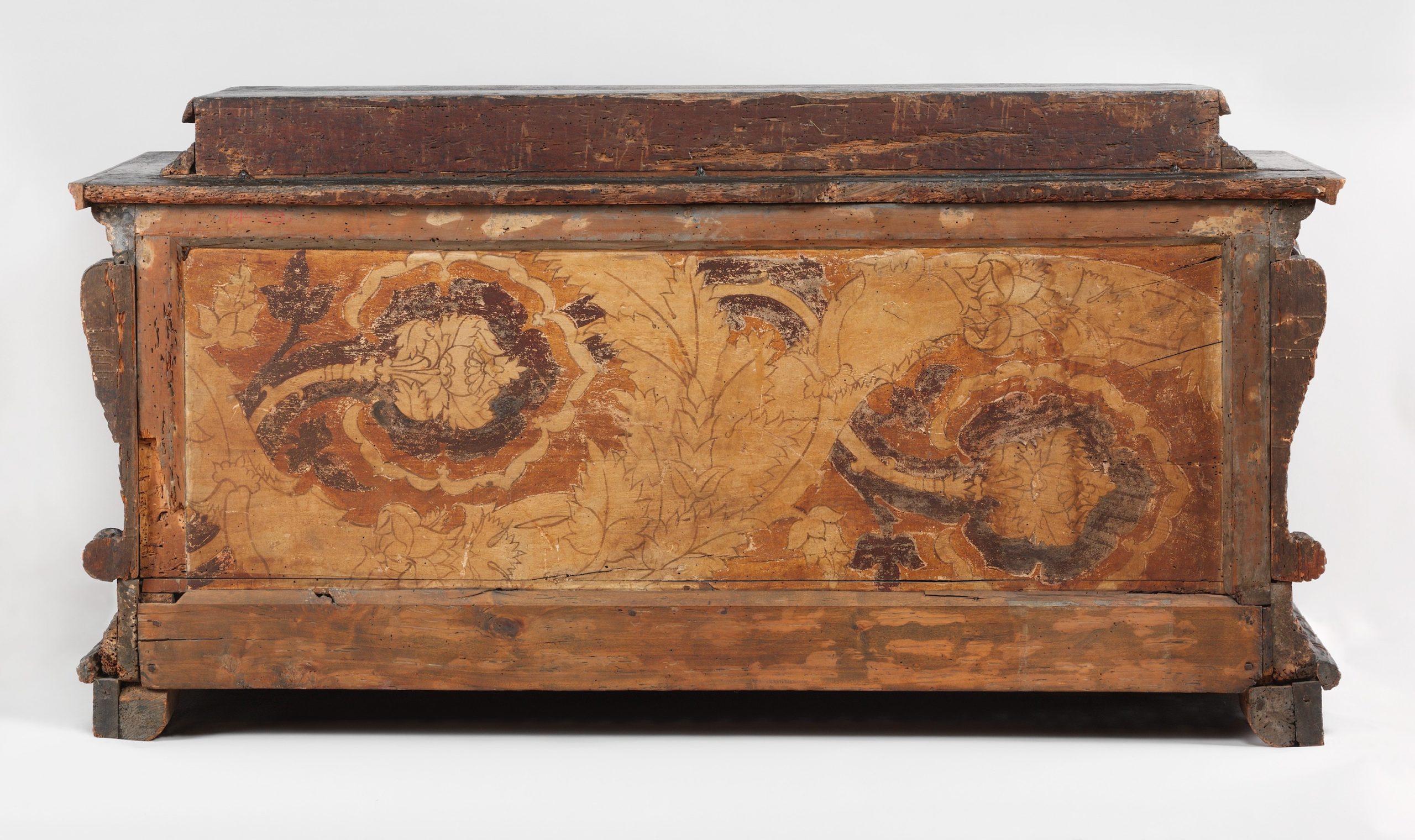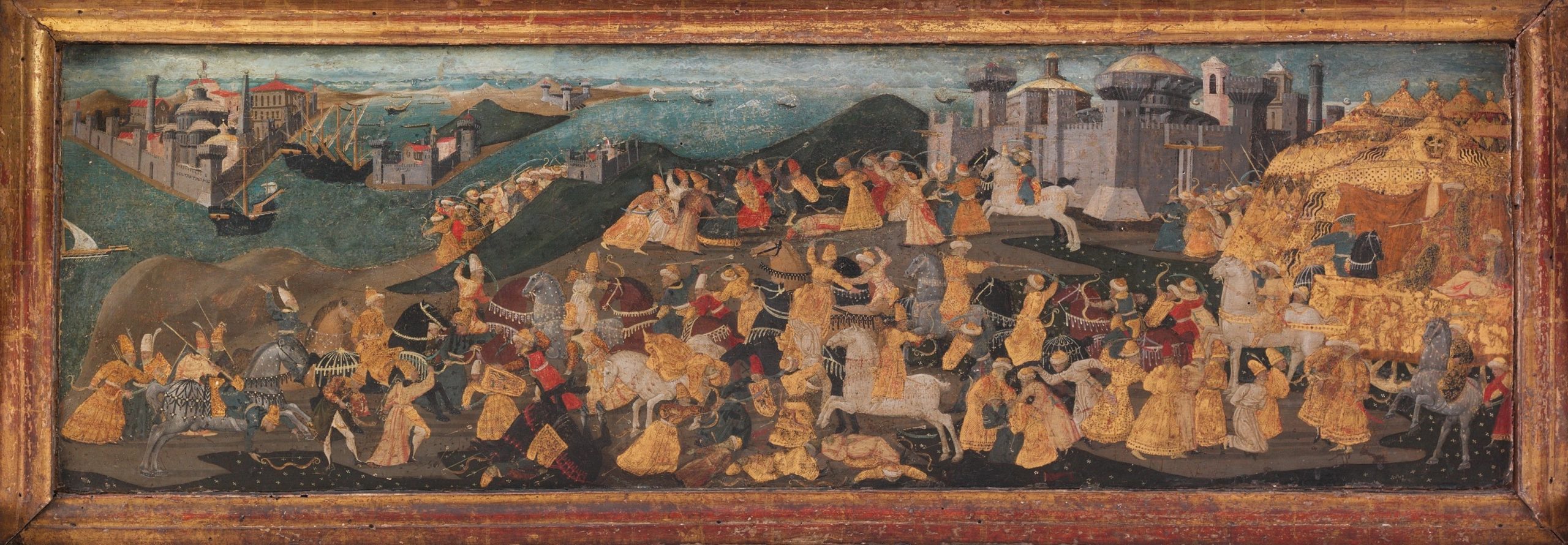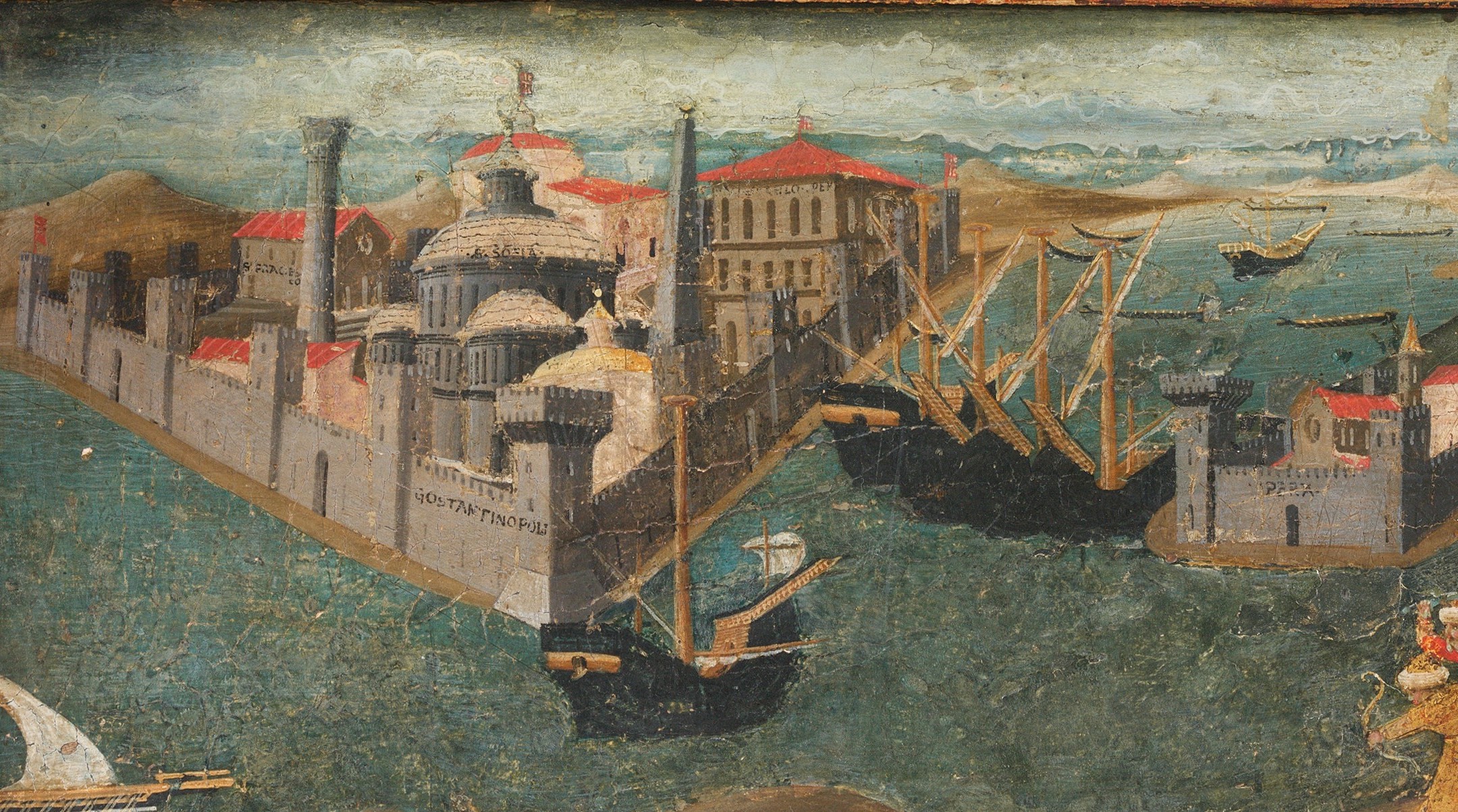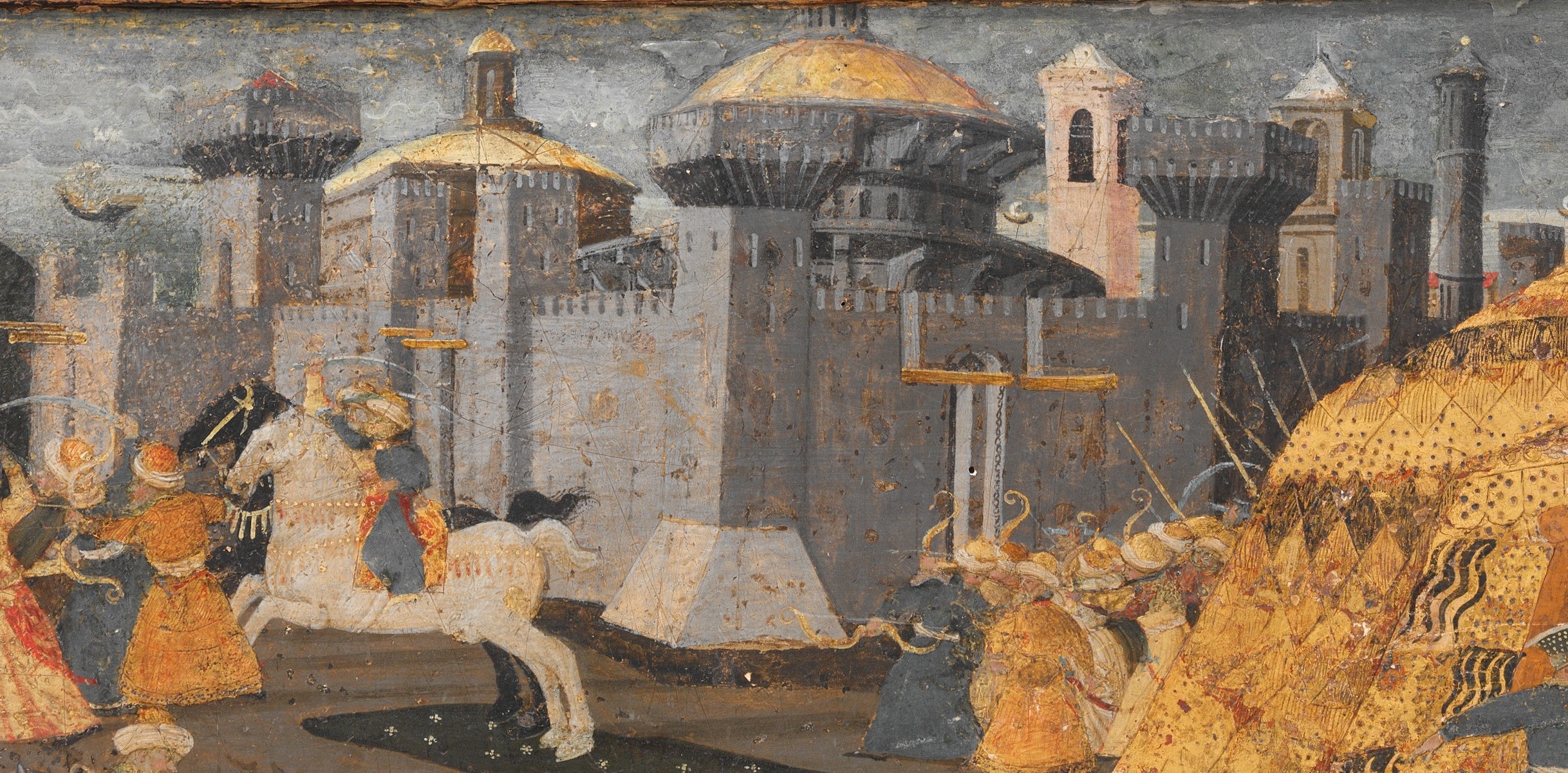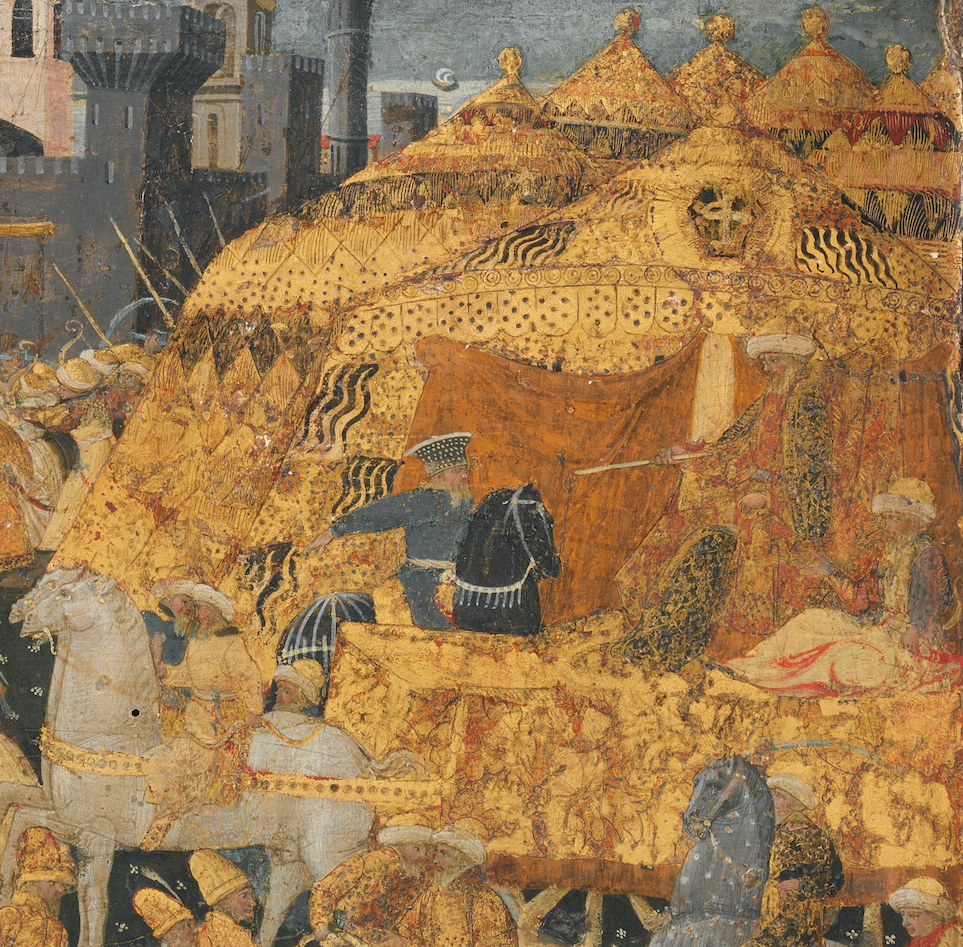As one of the few cassoni (marriage chests) to survive intact from the fifteenth century, The Metropolitan Museum of Art’s Cassone with the Conquest of Trebizond provides us with the opportunity to understand Renaissance Florentine social and political ideals and attitudes. Cassoni (also called forzieri in Florence) were expensive, lavishly decorated chests that accompanied a bride to her new marital home. These chests were given to the bride by her parents as their contribution to the wedding. Carrying precious textiles and goods such as expensive clothing, jewelry, and accessories, the chests contained many of the items the bride would need and use in her new home. The cassone was carried alongside the bride accompanied by her father and family through the streets of Florence, an important part of the ritual of marriage. It served to demonstrate the wealth of the family to the city’s citizens, displaying their power and influence.

View showing the decoration of the interior, Marco del Buono Giamberti and Apollonio di Giovanni di Tomaso, Cassone with the Conquest of Trebizond, after c. 1461, poplar wood, linen, polychromed and gilded gesso with panel painted in tempera and gold, 100.3 x 195.6 x 83.5 cm (The Metropolitan Museum of Art)


